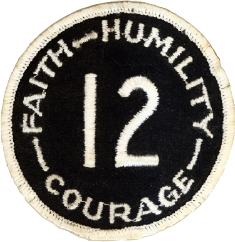Battle with Cancer
- During baseball season of his senior year at Granite Hills High School a mole grew under his left ear. It kept growing but it did not change color so Joe didn't worry about it even though it was bleeding a lot.
- The mole grew to the size of a marble and in August 1973 Joe went to a doctor and had the mole burned off.
- In May 1974, during baseball season of his freshman year at Grossmont College, the mole grew back. This time Joe went to see Dr. Gerard Petrone, a dermatologist. Dr. Petrone cut the mole out and had it sent to a lab for testing. The mole was officially diagnosed as malignant melanoma.
- Immediately following the cancer diagnosis, Joe had surgery to remove the entire mole. The surgery was performed by plastic surgeon Dr. Richard Escajeda at Center City Hospital in San Diego. Dr. Escajeda removed five ounces of tissue.
- Joe was originally told there was a 99% chance he was cured.
- Following his first surgery he went for regular check-ups every six months.
- During a hot summer day in August 1975 on a car ride from St. Mary's College back to Berkeley, Joe's bout with cancer first becomes public knowledge.
- On the trip back from the 1976 Oklahoma game, team physician Dr. Jerry Patmont informed Joe that an x-ray from a routine physical examination in August showed a spot on Joe's lungs. Dr. Patmont thought the spot was a flaw in the film so he ordered more x-rays to be sure.
- The following week at the Arizona State game Dr. Patmont informs the Roth's that everything was normal.
- Following the news after the Oklahoma game and regardless of Dr. Patmont's reassurance that doctors believed the x-ray was flawed and everything was normal, Joe never performed the same as he did in those first two games against Georgia and Oklahoma. Joe's production dropped as he most certainly was under a lot of mental pressure.
- It was around the time of the Oregon State game that Joe's family first suspected something was not right with Joe. His passes had lost their zip.
- Joe was starting to lose weight and was also having difficulty keeping his food down.
- While visiting his parents in Jerome, Idaho over the Thanksgiving weekend (1976), Joe made a startling discovery while showering. Joe noticed for the first time several lumps on his chest. The following day more lumps appeared.
- On December 3, 1976, during half-time of the Cal vs. University of San Francisco basketball game, Joe approached Dr. Patmont and asked him about the lumps.
- On December 7, 1976, the Roth's receive the news from Dr. Patmont that Joe's cancer had returned. Dr. Michael Friedman of the University of California, San Francisco (UCSF) confirms the diagnosis.
- Joe begins his first chemotherapy treatment at USSF on December 14, 1976. The chemo takes 45 minutes to enter his body intravenously.
- Dr. Friedman estimates that Joe has a 20% chance of survival and possibly several months to live.
- Joe wanted to live as normal a life as possible so Dr. Friedman granted him permission t play in the post-season all-star games (East-West Shrine Game, Hula Bowl, and Japan Bowl). The games gave Joe something to look forward to. On January 5, 1977 while preparing for the Hula Bowl in Honolulu the story breaks that Joe is battling cancer.
- On February 11, 1977 Joe becomes seriously ill and is taken to UCSF by John Matlock and Marilyn White. He remains in the hospital for six days where he experiences several serious complications. Blood clots prevent blood from flowing to his lower legs and the doctors fear the blood clots might cause a stroke. Doctors explore the options of amputating Joe's legs but the Roth family rejects this treatment.
- During his one week hospital stay Joe repeatedly requests to be discharged and sent home to his Berkeley apartment to be in peace.
- All the time Joe was in the hospital not once did he complain about his condition or his fate. He was willing to accept the cards the way they were dealt without a murmur. Joe did not want to die but he was not afraid.
- Joe was discharged from the UCSF hospital on Thursday, February 17. Family and friends arrange 24 hour around the clock care for Joe as three-hour shifts are put in place to attend to his needs.
- On Saturday, February 19 at 3:55 PM, less than 50 hours after returning home from the hospital, Joe dies. The cancer had ravaged his body so much that he was just about 100 pounds when he passed.
- Following his death, the Roth family received over 700 pieces of mail from fans, coaches, teammates, cancer victims, parents of cancer victims and including letters from President Gerald Ford, Vice President Nelson Rockefeller, Governor John Evans of Idaho, and Governor Jerry Brown of California.
